How to prepare dried pumpkin for the winter: description of various methods and useful recommendations
Of the various options for storing pumpkin, drying is a method in which a large fruit will take up little space without losing its beneficial properties. Drying a pumpkin for food or decoration is not difficult: this is done both in special devices and in the air.
The finished product is added to various dishes and left for the winter. We will talk about the features of the process further.
What's good about dried pumpkin?
Despite the fact that the vegetable dried at high temperatures, its chemical composition and properties practically do not change.
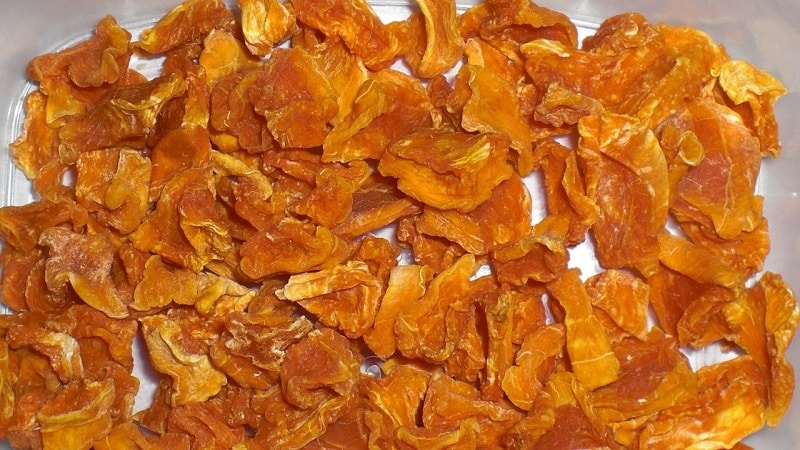
Composition and properties
The pulp contains:
- vitamins (A, E, C, PP, K, group B);
- trace elements (boron, vanadium, copper, iron, rubidium, cobalt);
- macroelements (potassium, silicon, phosphorus, magnesium, calcium).
Pumpkin will help with colds and viral infections, as it contains ascorbic acid (13% of the daily value). Carnitine restores blood clotting, accelerates metabolic processes, and is involved in weight loss.
Due to its high beta-carotene content (62%), the fruit is effective in restoring and protecting vision and has immunostimulating and antioxidant properties.
Interesting. The total content of carotenoids in 100 g of pulp is 145% of the daily value.
Fiber tidies up the digestive tract:
- restores microflora;
- removes unnecessary cholesterol, waste and toxins;
- Helps you lose weight as it keeps you full for a long time.
Calorie content of dried pumpkin is 68 kcal, raw pumpkin is 21 kcal.
Nutritional value of 100 g of dried product:
- proteins - 3 g;
- carbohydrates - 14 g;
- dietary fiber - 6 g;
- water - 75 g.
Only the juice and pulp are low-calorie; the seeds contain fatty oils.
Benefits and harms
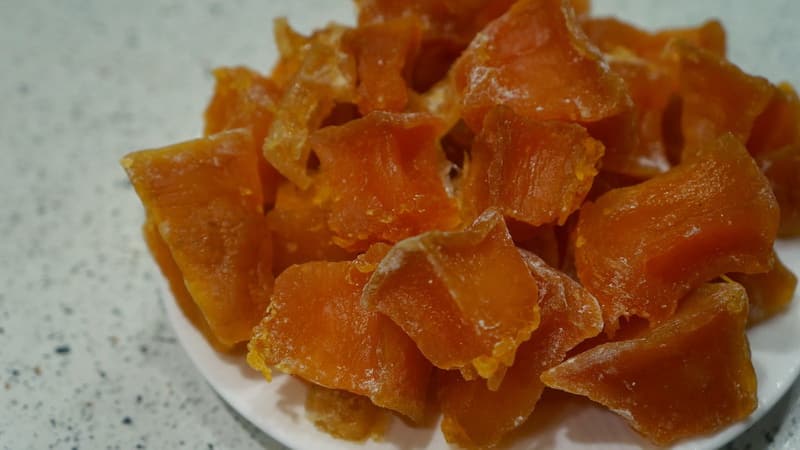
Pumpkin not only saves you from vitamin deficiency in winter, but also has a number of other useful properties:
- strengthens memory;
- relieves colitis and enteritis;
- accelerates hair growth, restores its structure;
- makes the skin elastic;
- relieves nervousness, irritability, insomnia;
- improves mood;
- strengthens bones and teeth;
- normalizes the functioning of the cardiovascular system.
Pumpkin dishes included in the diet of cancer patients, people with depression, patients with tuberculosis and eczema have a positive effect on their overall well-being.
The vegetable is useful for all people:
- Women: improves complexion, forms a beautiful tan, helps lose weight, strengthens nails, prolongs youth, eliminates toxicosis during pregnancy.
- For men: increases productivity and energy, strengthens the reproductive system.
- For children: does not cause allergies, improves immunity, normalizes growth and development.
Pumpkin is harmful for people suffering from diabetes, peptic ulcers and gastritis during exacerbation. Limit its use when there is low acidity in the stomach.
How to dry it properly
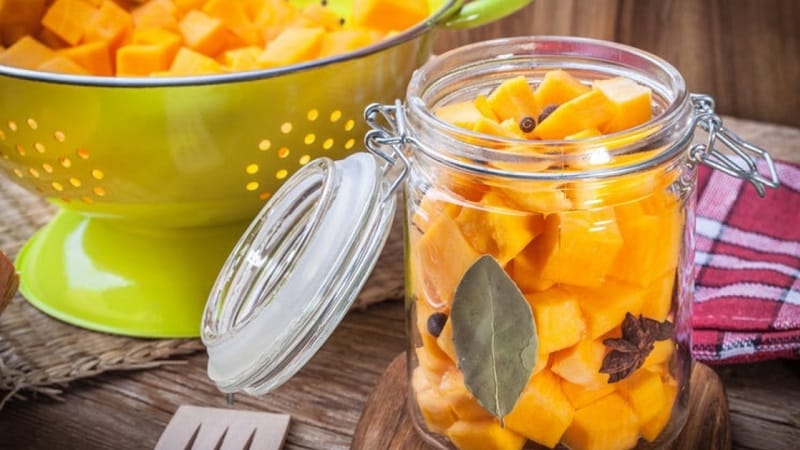
Vegetables are dried in different ways: their choice depends on the amount of time, place and availability of household appliances. The preparation of the fruit is the same: it is peeled and seeds removed, the pulp is cut into pieces at least 3 cm thick.
The preparation for dessert is slightly different:
- The pieces are laid out on a flat surface, sprinkled with sugar (200 g per 1 kg of pulp).
- Keep under pressure for 15 hours in a cool place.
- Drain the juice, sprinkle with sugar again and place in the same place for 12 hours, but without a press.
- The resulting juice is boiled with 2 tbsp. l. Sahara.Place the pulp in warm syrup for 15 minutes, then place in a colander.
For first and second courses, the pumpkin is blanched in salted water to preserve color.
In the oven
This drying is the simplest: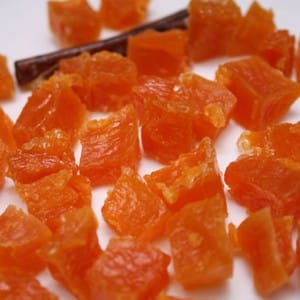
- The oven is preheated to +80…+85°C.
- Place the baking sheet with the pulp for 30 minutes.
- Cool the product to room temperature.
- Return to the oven, preheated to +65...+70°C for 30–40 minutes.
- Cool again and repeat the second stage of drying.
To allow moisture to escape, keep the oven door ajar.
In an electric dryer
This option longer, it takes at least 12 hours.
It is important to change the trays as the pulp dries:
- The pieces are laid out on a pallet.
- Place in the dryer, having previously turned on the maximum temperature.
- When the pulp shrinks and dries slightly, the temperature is reduced to +65°C.
- The pumpkin is brought to readiness.
On air
Air drying is suitable for sunny areas. They start it after making sure there is a good weather forecast for 10 days ahead:
- The prepared pulp is placed on trays with holes.
- Cover with gauze.
- Place in a slightly shaded, well-ventilated place for 2 days.
- Turn over and leave for another 2 days.
- Place in a draft under the sun for a week.
In the microwave
Drying in a microwave oven is tedious, since it is important not to be distracted:
- Set the power to no more than 600 W.
- Every 5 minutes, take out and turn over the pulp.
- The process is constantly monitored so that the vegetable does not burn.
How to check readiness
The finished dried pumpkin looks like dry shavings or elastic pads. They bend well and do not stick to your hands. Some bring the product to a state of brittleness. In this case, it is easy to make pumpkin powder.
Recipes
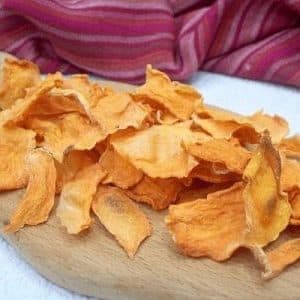
When dried, they make chips and candied fruits.
Healthy and tasty chips are prepared like this:
- Salted slices are baked in the oven until soft.
- Place on a drying tray.
- Keep at +60°C until the chips break with a crunch.
- The cooled product is placed in a hermetically sealed jar.
Candied fruits with orange will strengthen the immune system during the cold season.
Ingredients:
- chopped pumpkin pulp - 1 kg;
- sugar - 1.5 tbsp;
- orange zest - 1 tsp;
- ginger or cinnamon - a pinch (optional).
Preparation:
- Boil sugar syrup with cinnamon or ginger in a deep bowl, add pumpkin pieces and orange zest.
- Boil for 5–7 minutes, leave for 12 hours. Repeat twice.
- When the pieces have cooled, take them out, let the syrup drain and lay them out on parchment.
- Bring to readiness in a dryer (6–8 hours) or a fan oven (2–3 hours).
- The cooled candied fruits are sprinkled with a mixture of starch and powdered sugar (1:1).
- Store in an airtight container.
Terms and conditions of storage
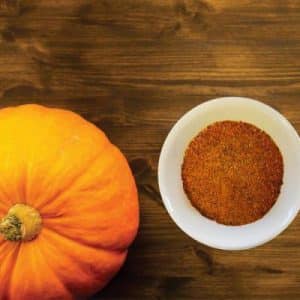
Optimal conditions for dried pumpkin, under which it does not lose its quality for up to two years:
- air temperature within +18°C;
- humidity - 50% or lower;
- paper, glass or plastic container, hermetically sealed, selected for one serving.
The jar is opened as little as possible, the contents are removed quickly, since the pumpkin is hygroscopic and instantly absorbs moisture from the air.
Use in cooking
Dried pumpkin is used to make puree soup, jam, jam, and is added to stews, stews, salads, marinades and sauces. The vegetable improves the appearance and taste of casseroles, pancakes, and pancakes.
Baking will become even more beautiful if you add pumpkin powder to it. It is made from slices brought to a state of brittleness in the dryer. They are ground in a meat grinder or blender into coarse powder or flour.
Drying for decoration
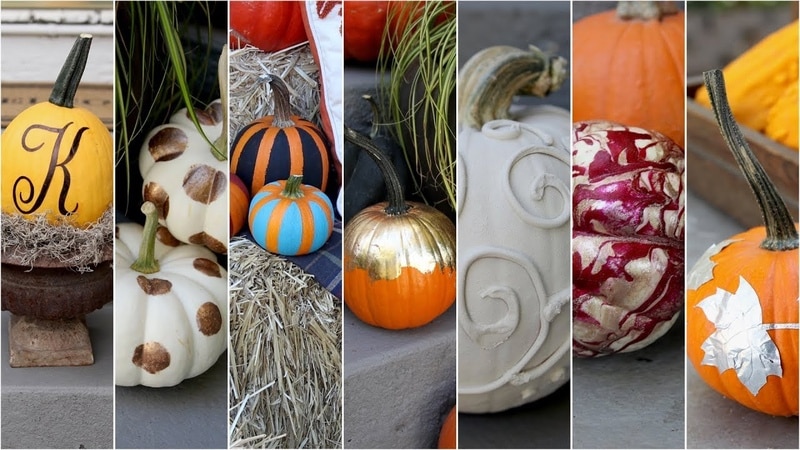
Decorative products are appropriate in the kitchen, fence, decorate fountains and flower beds. To do this, select fruits of certain varieties, grown specifically for decoration. These are pumpkins of rich color, original shape or with a pattern on the surface.
Important! In order for the product to serve for a long time, the workpiece is dried naturally, in air.
Select ripe, medium-sized fruits without damage. They are washed with soap, dried, and disinfected with alcohol.
If the pumpkins are dried entirely in air, they are hung in a draft in a dry, dark place for 3-4 months, checked once a week. When the fruit becomes light and thunderous, the top is cut off and the contents are taken out through it.
To get quick results, the whole vegetable is dried in the oven. Place on a baking sheet covered with parchment and turn on the fan mode. Turn over every hour until the fruit turns into a light “rattle”.
Tips and tricks
It is not necessary to consume the vegetable raw or in juice form. People with diseases of the cardiovascular system, kidneys, and gastrointestinal tract benefit from heat-treated pumpkin (in the form of porridges, soups, casseroles).
For those who cannot quit smoking or are sick with tuberculosis, it is advisable to use decoctions of the pulp. Carotene and vitamin E resist lung diseases, cleansing them. Pumpkin is not addictive or allergic. It replaces a lot of vegetables and fruits.
Conclusion
Dried pumpkin, due to its neutral but piquant taste, is suitable for preparing any dishes. As an independent dessert, it is baked with honey, added to pies, and given to children instead of sweets as sweet and healthy candied fruits.
Vegetables are prepared for future use in the microwave, oven, electric dryer and in the air in order to compensate for the lack of vitamins and other useful substances in winter.